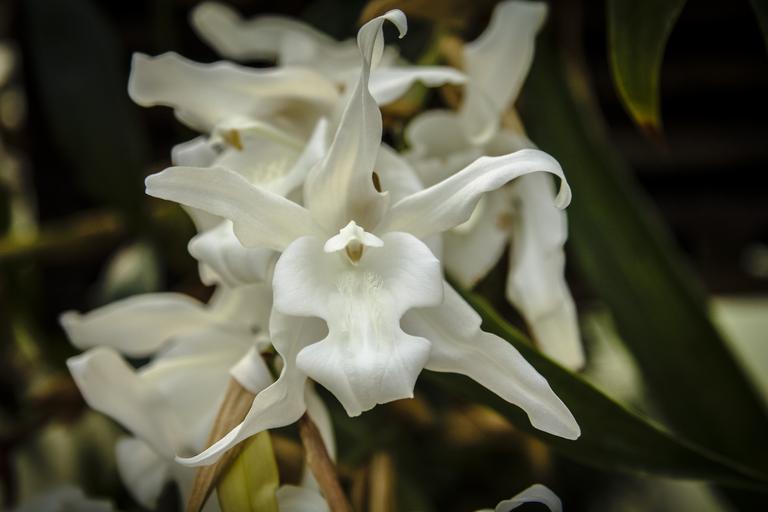MAKE A MEME
View Large Image

| View Original: | Coelogyne_cristata_'Allba'.jpg (5184x3456) | |||
| Download: | Original | Medium | Small | Thumb |
| Courtesy of: | www.flickr.com | More Like This | ||
| Keywords: flower plant Coelogyne cristata is an epiphytic orchid that comes from cool, moist areas of the eastern Himalayas and Vietnam. It blooms every spring, before the snow begin to melt. Its genus name Coelogyne originates from two Greek words, koilos (“hollow”) and gyne (“woman”), because of the orchid’s pistil. Cristata takes its species name from crista, the Latin word for “comb”, because of the look of the flower’s lip. Although it is better known by its botanical name, Coelogyne cristata does have nicknames around the world. In Scandinavia and Germany, it is known as the “Snow Queen” because it keeps blooming in the melting snow. It is called Schneekönigin in Germany, Snödrottningorkidé in Sweden, Snødronning in Norway, and Lumikuningatar in Finland. But the Bulgarians prefer “Angel Orchid” (Ангелската орхидея) because its color reminds them of the clothes of the angel. The Chinese and the Japanese are less poetic. For the Chinese, it was bei mu lan (北蘭) – “Orchid of the North Woods”. The Japanese simply call it aruba ran (アルバ蘭) – “Alba Orchid” (from the Latin word for “white”, alba) but they do sometimes know it as the Eastern Himalayan orchid. Its botanical name, coelogyne cristata, is pronounced in Japan as “serojine kirisutata” (セロジネ キリス). This is probably the orchid that gave a town near Darjeeling in the Indian Himalayas, Kurseong, its name. Kurseong was named by its first settlers centuries ago as खरसाङ or Kharsang, the Lepcha word for “The Land of the White Orchids”. en.wikipedia.org/wiki/Coelogyne_cristata Coelogyne cristata is an epiphytic orchid that comes from cool, moist areas of the eastern Himalayas and Vietnam. It blooms every spring, before the snow begin to melt. Its genus name Coelogyne originates from two Greek words, koilos (“hollow”) and gyne (“woman”), because of the orchid’s pistil. Cristata takes its species name from crista, the Latin word for “comb”, because of the look of the flower’s lip. Although it is better known by its botanical name, Coelogyne cristata does have nicknames around the world. In Scandinavia and Germany, it is known as the “Snow Queen” because it keeps blooming in the melting snow. It is called Schneekönigin in Germany, Snödrottningorkidé in Sweden, Snødronning in Norway, and Lumikuningatar in Finland. But the Bulgarians prefer “Angel Orchid” (Ангелската орхидея) because its color reminds them of the clothes of the angel. The Chinese and the Japanese are less poetic. For the Chinese, it was bei mu lan (北蘭) – “Orchid of the North Woods”. The Japanese simply call it aruba ran (アルバ蘭) – “Alba Orchid” (from the Latin word for “white”, alba) but they do sometimes know it as the Eastern Himalayan orchid. Its botanical name, coelogyne cristata, is pronounced in Japan as “serojine kirisutata” (セロジネ キリス). This is probably the orchid that gave a town near Darjeeling in the Indian Himalayas, Kurseong, its name. Kurseong was named by its first settlers centuries ago as खरसाङ or Kharsang, the Lepcha word for “The Land of the White Orchids”. en.wikipedia.org/wiki/Coelogyne_cristata | ||||